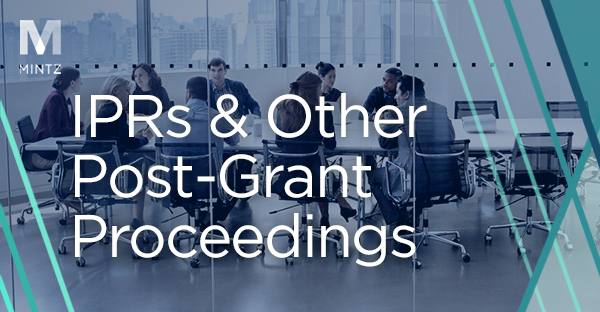Patent Owner Tip #3 for Surviving An Instituted IPR: How Patent Owner Experts Go from Zero to Hero
Drafting the expert declaration is another critical task for Patent Owners during the inter partes review (“IPR”) discovery period. As noted in our previous post, IPR expert witnesses provide declarations as affirmative testimony in lieu of live testimony before the Board at the hearing. Because the expert witness will not be able to provide live testimony before the Board, expert declarations are the final evidence of the experts’ opinions, as there is no opportunity to correct misstatements or mistakes. Due to the procedural schedule of the IPR system, Patent Owners have the unique opportunity to file their expert declarations after deposing Petitioners’ experts, providing a significant strategic advantage.
As we have previously written, although Patent Owners may submit an expert declaration with the POPR to rebut testimony of the Petitioner’s expert, there are strategic reasons to avoid this, specifically that prior to institution, disputes of material fact “will be viewed in light most favorable to the petitioner.” 37 C.F.R. § 42.108(c). At the POR stage, Patent Owners can use the expert declaration to exploit factual disputes. In fact, given the unique IPR procedural schedule, Patent Owners are in the enviable position to submit their expert reports after deposing Petitioners’ expert witnesses. Because Patent Owners have the last evidentiary word, it is important to use this advantage to the fullest extent possible.
While it is often prudent to forego an expert declaration at the POPR stage, exploiting disputes of material fact can be effective at the POR stage. After institution, Petitioner bears of the burden of proof, and factual disputes are no longer resolved in its favor. 35 U.S.C. § 316(e). Because the Petitioner bears the burden of both persuasion and production, the Patent Owner can effectively use the expert declaration to highlight disputes of material fact to highlight the Petitioner’s failure to carry its burdens of proof. See In re Magnum Oil Tools Int’l, Ltd., 829 F.3d 1364, 1375 (Fed. Cir. 2016). Because Patent Owners have the advantage of submitting expert declarations after deposing Petitioners experts, they can analyze all of their arguments, noting the inconsistencies, misstatements or disputes of material fact, and identify the weaknesses in expert testimony.
One effective method of exploiting disputes of material fact is to identify misstatements or factual errors in Petitioner’s expert declaration and testimony and correct such misstatements and errors in the Patent Owner’s expert declaration. As noted above, submitting an expert declaration prior to institution can be risky, however, at the POR stage, expert testimony can be used to fill in the holes left by Petitioner’s expert. Many expert witnesses are very experienced witnesses and may decline to provide fulsome answers in expert depositions. This becomes an opportunity for Patent Owners’ expert to fill in those holes with testimony that supports Patent Owners’ positions. Where Petitioner’s expert stumbles, testifies to a lack of knowledge, or that they would need more information to answer a question during deposition, Patent Owner’s expert has to opportunity to fill in the gaps with the expert declaration. This in an amazing opportunity to not only advance Patent Owner’s position but to gain credibility with the Board.
Patent Owners can exploit this advantage and use their expert declarations to fill in the gaps left by Petitioner’s expert testimony. This not only allows the Patent Owner’s expert to have the last word, they can effectively direct the Board to the Petitioner’s failure to carry their burden of proof.
To learn more from the Mintz IP team, follow us on LinkedIn and check out our Exclusive Rights podcast.



